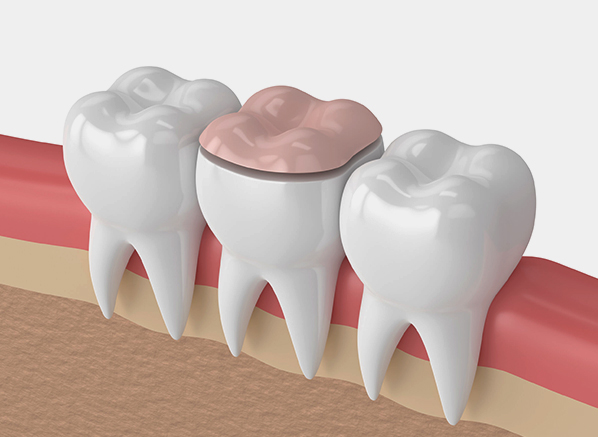Pay Online
Dental inlays and onlays In Greeley, CO

When more than 50% of the biting surface of a tooth is damaged, a dentist may choose to use an inlay or onlay. These dental restorations can be made from porcelain, gold, or composite resin and are bonded to the damaged area of the tooth. An inlay is used inside the cusp tips of the tooth, similar to a dental filling. On the other hand, an onlay is a larger reconstruction that extends over one or more of the cusps of the tooth. While gold has traditionally been the preferred material for inlays and onlays, porcelain has gained popularity in recent years due to its strength and ability to match the natural color of teeth.
How are inlays and onlays applied?
The procedure for inlays and onlays typically requires one or two appointments. During the first visit, the dentist removes the old filling or damaged area of the tooth and prepares it for the inlay or onlay. An impression of the tooth is taken and sent to a lab for fabrication. A temporary sealant is applied, and the next appointment is scheduled.
During the second appointment, the temporary sealant is removed, and the dentist ensures that the inlay or onlay fits properly. If the fit is satisfactory, the inlay or onlay is bonded to the tooth using a strong resin and polished for a smooth finish.
Considerations for Inlays and Onlays
In comparison to traditional fillings, inlays and onlays offer a better solution for preserving the strength of natural teeth. By bonding them directly onto the tooth using strong resins, they can even increase the tooth's strength by up to 75 percent. This durability allows them to last for a significant period of time, ranging from 10 to 30 years. Onlays are particularly beneficial when the tooth damage does not require a full dental crown.
Schedule Your Restorative Dentistry Consultation
Does your smile need repair from damage, decay, or lost teeth? At Luker Dental, our team believes in treating each patient with exceptional care to help them achieve the smile they deserve. Schedule your restorative dentistry consultation to have your questions answered by our skilled team!

